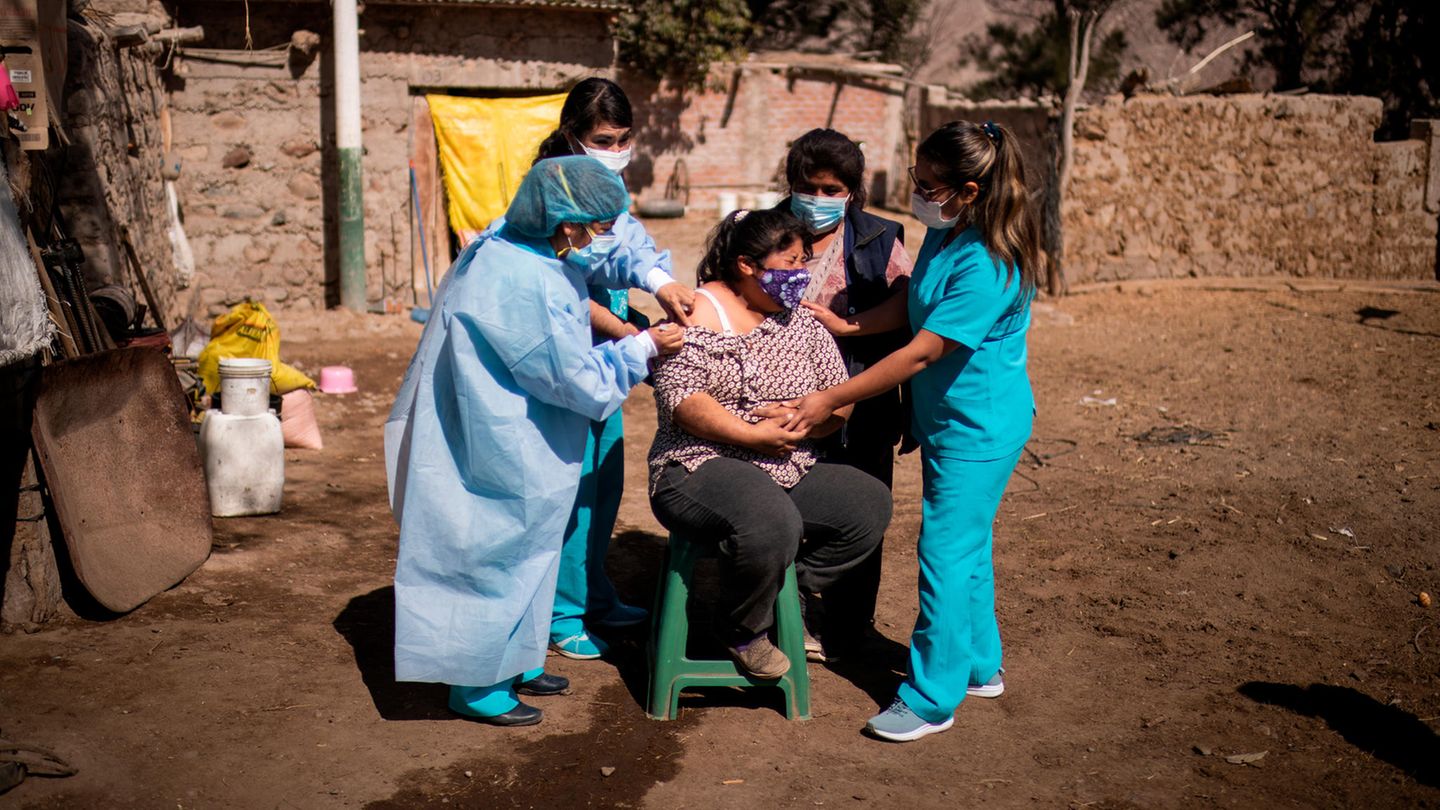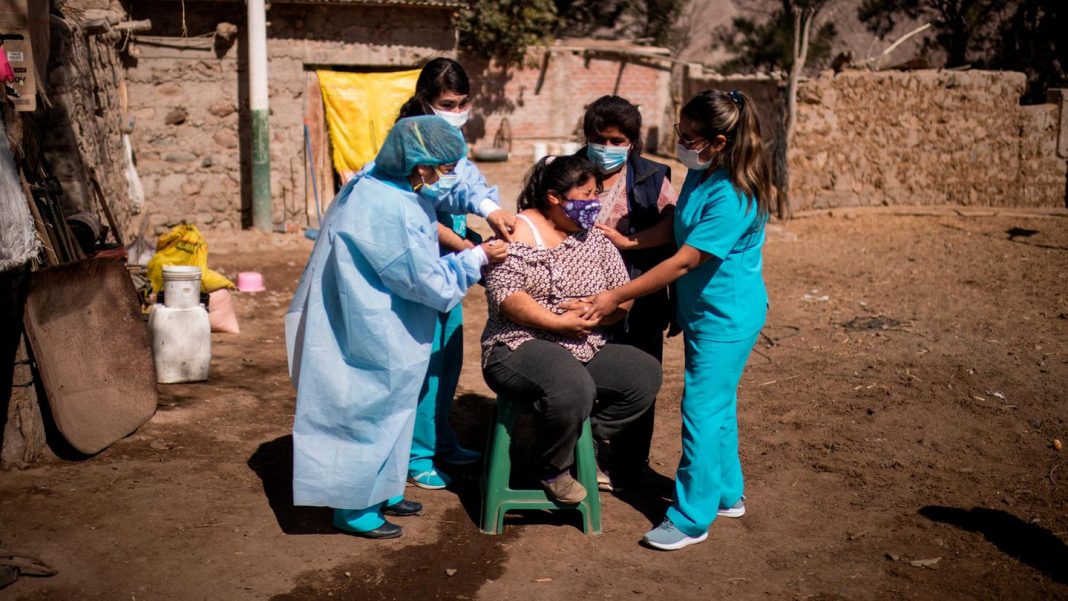Pandemic
Lambda variant in Europe – this is known about the mutant

Peruvian healthcare workers vaccinate a woman against coronavirus
© Denis Mayhua / DPA
The corona variant Lambda recently spread in Latin America. Recently, there have also been repeated cases in Europe. However, many questions about the variant are still open.
Alpha, beta, gamma or delta: different variants of the original coronavirus circulate worldwide. Those who can prevail usually have one or more fitness advantages. The mutant delta, which is currently prevalent in Germany, probably combines two features that give it advantages: on the one hand, the virus is considered more contagious and, at the same time, current vaccines seem to protect less well against infection with the mutant.
Currently, there are also many reports of a variant that initially spread in South America. It bears the name Lambda or C. 37. Where the renewed interest in lambda comes from is not entirely clear. Presumably, a suspected outbreak in the Spanish region of Cantabria plays a role. There Lambda is suspected to be responsible for an outbreak with around 80 infections, Spanish media report. The variant has also been proven in Great Britain and Germany, albeit in isolated cases. What is known about the mutant?
In which countries has lambda spread so far?
The variant was first documented in Peru in December 2020. According to reports, lambda already accounted for 81 percent of corona cases in the country in April 2021. Data from genome sequencing suggest that the variant is mainly widespread in Latin America, including Chile, Peru and Mexico. The variant has already been proven in the USA. The GISAID portal, which collects and evaluates data on the occurrence of Sars-CoV-2 variants worldwide, currently lists 649 detected lambda cases in the USA.
In principle, it is not uncommon for individual virus variants to spread across national borders. However, if variants repeatedly lead to outbreaks or if they have mutations that indicate, for example, a higher transmissibility, they are placed under observation. This has recently been the case with Lambda.
How does the World Health Organization (WHO) evaluate the variant?
The variant has been under the supervision of the WHO since 15 June. It is thus one of a total of 13 “Variants of Interest” (VOI).
A variant becomes VOI if it has genetic features that are associated with altered viral properties. At the same time, VOI lead to numerous contagions or clusters in different countries or have other peculiarities that indicate an emerging risk to global public health.
Lambda is currently not classified as a Variant of Concern (“VOC”). A mutant becomes a VOC if its properties have changed compared to the original variant in such a way that, for example, it is more contagious or can better escape the immune response. This requires appropriate evidence. The WHO currently lists four variants as VOC: alpha, beta, gamma and delta.
What mutations does lambda have?
The variant has six changes in the spike protein of the virus. These changes are always under special observation, since the virus uses the protein to dock to human cells. At the same time, the immune response triggered by vaccines is primarily directed against the spike protein. If the protein changes, antibodies may work less well against the virus or the virus may dock even better to human cells. However, it is also conceivable that mutations do not mean any benefits for the virus.
Other VOI and VOCs also show several changes in the spike protein. This is therefore not a unique selling point of the lambda variant.
What information is there from the RKI to the lambda variant?
The Robert Koch Institute (RKI) currently lists 103 confirmed lambda cases for the entire year 2021. The proportion of the variant reached its provisional peak in the 22nd calendar week with 0.4 percent. After that, the share of the variant fell again and was last again at zero percent (week 25).
For comparison: in the same period, Delta developed into the dominant variant in Germany. While the proportion of delta in the 22nd calendar week was still 7.8 percent of all samples examined, it has now risen to 59.4 percent (week 25).
Spain (55), France (14) and Italy (11) also already have lambda cases, according to GISAID. The portal also lists seven cases in the UK. Overall, however, the figures are at a low level.

How dangerous is lambda?
This question is currently difficult to answer. Although there is evidence that the variant could be more infectious due to its mutations or better escape the immune response of the body, this is ultimately not proven. If appropriate data are available, lambda would initially be classified by the WHO as a variant of concern.
In Germany, Lambda has so far not been able to assert itself despite individual proofs in recent weeks. The focus in this country is rather on the delta variant of the virus. Experts suspect that Delta could drive the case numbers up again in the coming weeks towards autumn.
However, according to the RKI, a high vaccination rate of at least 85 percent could curb a possible fourth wave in the autumn.
Sources: Robert Koch Institute (RKI) / Medical Journal / WHO



